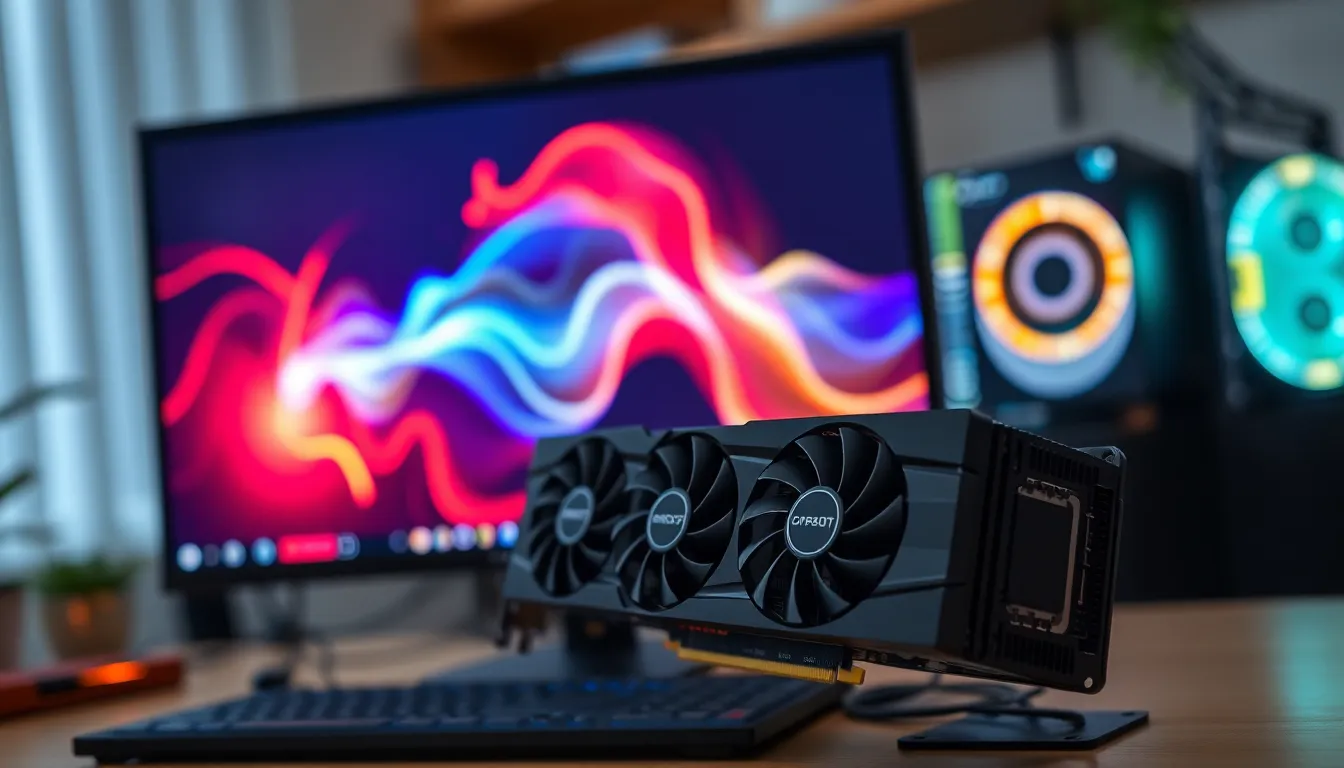In a world where speed is king and slow loading times are the enemy, hardware acceleration in Chrome is like having a turbocharger for your browsing experience. Imagine zipping through web pages faster than a caffeinated squirrel on a mission. By tapping into your computer’s powerful hardware, Chrome can boost performance, making those pesky lag spikes a thing of the past.
But what does this mean for the average user? It means smoother video playback, quicker downloads, and a browsing experience that feels as slick as a greased weasel. Whether you’re streaming your favorite show or diving into a productivity marathon, enabling hardware acceleration can transform your online adventures from sluggish to sensational. Get ready to revolutionize the way you surf the web—because who doesn’t want their browser to work harder while they kick back and relax?
Table of Contents
ToggleWhat Is Hardware Acceleration?
Hardware acceleration refers to the use of specialized hardware to perform certain tasks more efficiently than software alone. This technology boosts performance, resulting in a smoother user experience.
Definition and Basics
Hardware acceleration utilizes specific hardware components like graphics processing units (GPUs) to carry out complex calculations. It reduces the burden on the CPU, allowing it to focus on other tasks. This approach significantly enhances processes such as rendering graphics and decoding video. When enabled, hardware acceleration optimizes performance levels for various applications, creating a seamless experience for users.
Importance in Computing
In computing, hardware acceleration plays a crucial role in improving efficiency. Performing demanding tasks on dedicated hardware increases processing speed and reduces power consumption. Many users experience faster rendering times in graphics-intensive applications. Increased responsiveness during multimedia playback also enhances the overall experience. Furthermore, hardware acceleration supports better resource management, freeing up CPU capacity for other crucial operations.
How Hardware Acceleration Works in Chrome

Hardware acceleration in Chrome uses specialized hardware to enhance performance, primarily focusing on graphics processing units (GPUs) and their interaction with the CPU. This collaboration allows the browser to utilize available resources more effectively, resulting in a smoother online experience.
Components Involved
GPUs stand out as the key component in hardware acceleration, dedicated to rendering graphics. These units handle complex visual tasks, such as rendering high-definition videos and animations. The CPU contributes by managing general tasks, directing operations, and executing coding instructions. Together, both components streamline processes through efficient load distribution. Other essential components include memory usage optimization and dedicated video hardware, which help reduce bottlenecks during intensive tasks. Increased reliance on these components maximizes overall system performance.
Benefits for Performance
Performance improvements manifest in several significant ways. Users experience reduced lag during video playback, which enhances multimedia experiences. Enhanced rendering capabilities lead to faster load times and smoother transitions between web pages. Improved power efficiency also becomes apparent, as hardware acceleration lowers CPU workload. This optimization results in extended battery life for portable devices. Additionally, increased responsiveness in web applications provides users with a more enjoyable and fluid browsing experience. Harnessing these benefits, users can navigate their online activities more effectively.
Common Issues with Hardware Acceleration in Chrome
Users may encounter several issues with hardware acceleration in Chrome. These problems can affect performance and user experience if not addressed properly.
Graphics Rendering Problems
Graphics rendering problems frequently arise when hardware acceleration is enabled. Users often report issues such as distorted images, jarring video playback, or sudden crashes during multimedia sessions. Some users might find that disabling hardware acceleration resolves rendering issues, allowing for smoother graphics performance. Frequent updates to Chrome can also introduce compatibility challenges, leading to these types of problems. Graphic card drivers play a crucial role, and outdated drivers often exacerbate rendering issues associated with hardware acceleration.
System Compatibility Challenges
System compatibility challenges can hinder hardware acceleration’s performance in Chrome. Certain operating systems or configurations lack support for the latest features, causing instability and poor performance. Users might experience slow browsing speeds or unresponsive tabs due to incompatible settings or hardware. Both older hardware and outdated graphics drivers can lead to significant issues. Ensuring compatibility with system specifications can help mitigate these challenges. Users should also check for updates regularly to maintain optimal performance while utilizing hardware acceleration.
How to Enable or Disable Hardware Acceleration in Chrome
Enabling or disabling hardware acceleration in Chrome affects browsing performance. Users can easily toggle this setting to suit their needs.
Step-by-Step Guide
- Open Chrome and click the three vertical dots in the upper-right corner.
- Select “Settings” from the dropdown menu.
- Scroll down and click “Advanced.”
- Under the “System” section, look for “Use hardware acceleration when available.”
- Toggle the switch to enable or disable the feature.
- Restart Chrome for changes to take effect.
Adjusting this setting allows for optimized graphics performance or troubleshooting issues that arise during use.
Troubleshooting Tips
Graphics rendering problems often stem from outdated drivers. Ensure GPU drivers are current to prevent issues. Users might experience crashes or distorted images; disabling hardware acceleration can resolve these problems. Checking Chrome’s compatibility with the system also helps. If performance issues persist, consider resetting Chrome to its default settings. Keeping the browser updated ensures the latest features and fixes are available.
Hardware acceleration in Chrome is a game changer for users seeking enhanced performance and efficiency. By leveraging specialized hardware like GPUs, it transforms the browsing experience into something smoother and more responsive. Users can enjoy faster downloads and seamless video playback, making online activities more enjoyable.
While there may be occasional hiccups like graphics rendering issues, the benefits often outweigh the drawbacks. Keeping systems updated and checking compatibility ensures optimal performance. For anyone looking to elevate their browsing experience, enabling hardware acceleration is a step worth taking.


